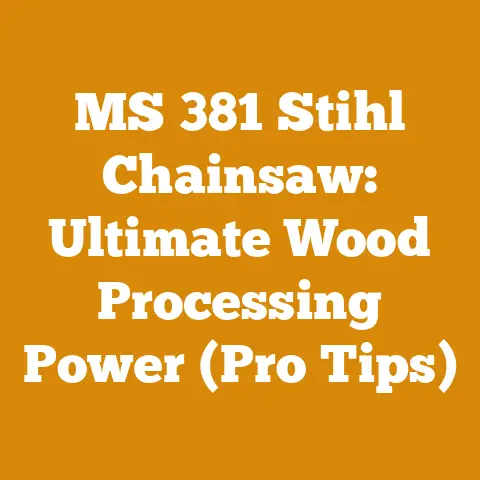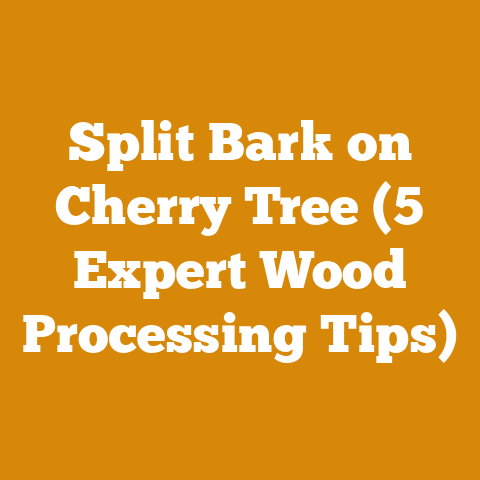Wooden Fence Corners (5 Expert Tips for Durable Joinery)
Let’s dive into the world of wooden fences, specifically focusing on those vulnerable corners. Before we get started, let’s address a common question: “What about waterproofing?” Applying a high-quality, penetrating sealant or wood preservative specifically designed for exterior use is crucial. This helps protect the wood from moisture, rot, and insect infestation, significantly extending the lifespan of your fence. I’ve seen firsthand how neglecting this step can lead to corner posts rotting out in just a few years, a costly and frustrating experience. Now, let’s build some fences that last!
Wooden Fence Corners: 5 Expert Tips for Durable Joinery
Building a wooden fence that stands the test of time is more than just slapping some posts in the ground and connecting the rails. The corners, those points where the fence changes direction, are especially vulnerable. They bear the brunt of tension, wind, and the relentless assault of the elements. Over the years, I’ve learned a thing or two about crafting durable fence corners that can withstand almost anything Mother Nature throws their way. I’m going to share my top five expert tips to help you build fence corners that will last.
1. The Power of the Right Post: Wood Selection and Sizing
The foundation of any strong fence corner is the post itself. Skimping here is a recipe for disaster. The type of wood, its treatment, and its size all play critical roles in determining the longevity of your fence.
-
Wood Species: Not all wood is created equal. For fence posts, you need something naturally rot-resistant or treated to withstand ground contact.
- Naturally Rot-Resistant Woods: Cedar, redwood, black locust, and cypress are excellent choices. They contain natural oils and compounds that resist decay. However, these can be more expensive than treated lumber.
- Pressure-Treated Lumber: This is the most common and often most cost-effective option. Look for lumber treated with preservatives like Alkaline Copper Quaternary (ACQ) or Copper Azole (CA). Make sure it’s rated for “ground contact.” I once used lumber that was only rated for “above ground” and the posts rotted out within 5 years. A costly lesson learned.
- Data Point: According to the USDA Forest Products Laboratory, pressure-treated lumber can last 20-40 years or more in ground contact, while untreated lumber may only last 2-5 years.
-
Post Size: Don’t underestimate the importance of post size. For corners, I recommend using larger posts than you would for line posts.
-
Minimum Size: I generally recommend a minimum of 6×6 inch posts for corners, especially if you live in an area with high winds or heavy snow. 4×4 posts are simply not strong enough to handle the stress over the long term.
- Post Depth: Burying the post deep enough is just as important as its size. As a general rule, bury at least one-third to one-half of the post’s total length. For an 8-foot post, this means burying it 2.5 to 4 feet deep. I’ve seen fences fail simply because the posts weren’t set deep enough.
- Personal Story: I once helped a neighbor rebuild his fence after a particularly strong windstorm. He had used 4×4 posts set only 18 inches deep. The entire fence, including the corners, simply tipped over. We replaced them with 6×6 posts set 3 feet deep, and he hasn’t had a problem since.
-
Concrete vs. Gravel: The debate rages on. While concrete provides a more rigid setting, it can also trap moisture around the post, leading to rot. Gravel allows for better drainage.
-
My Preference: I prefer using gravel for most situations. I dig a wider hole, place a layer of gravel at the bottom for drainage, set the post, and then backfill with more gravel, tamping it down firmly as I go. This provides good support while allowing water to drain away from the post.
- Concrete Considerations: If you choose to use concrete, make sure to slope the concrete away from the post to encourage water runoff. Consider using a concrete collar that extends a few inches above the ground to further protect the post.
2. Bracing for Impact: The Art of Effective Corner Bracing
A strong post is a good start, but it’s not enough on its own. Effective bracing is essential to prevent the corner post from leaning or racking under tension. There are several bracing methods you can use, each with its own advantages and disadvantages.
-
Diagonal Brace: This is the most common and often the most effective bracing method. It involves running a diagonal brace from the corner post to the adjacent line posts.
- Placement: The brace should run from the top of the corner post to the bottom of the adjacent post. This creates a triangular structure that resists racking.
- Material: Use the same material as your fence posts for the braces. 4×4 lumber is generally sufficient for most fences.
- Connection: Secure the brace to the posts using bolts or screws. I prefer using bolts, as they provide a stronger and more durable connection. Use galvanized hardware to prevent rust.
- Tensioning: For added strength, you can install a tensioning system on the diagonal brace. This can be as simple as a turnbuckle or a length of chain with a tightening mechanism. This allows you to adjust the tension on the brace as needed to keep the corner post plumb.
-
Horizontal Brace (Deadman): This method involves burying a horizontal brace in the ground behind the corner post.
-
Construction: Dig a trench behind the corner post and bury a length of lumber horizontally. Attach the corner post to the buried brace with a vertical post.
- Advantages: This method is very strong and can be particularly useful in areas with soft soil.
- Disadvantages: It requires more excavation and can be more time-consuming to install.
-
“H” Brace: This involves placing a second post in line with the fence and connecting it to the corner post with a horizontal brace.
-
Construction: Set a second post a few feet away from the corner post. Connect the two posts with a horizontal brace at the top.
- Advantages: This is a very strong bracing method that can be used for long fence runs or in areas with high winds.
- Disadvantages: It requires more materials and can be more expensive than other bracing methods.
- Case Study: I worked on a ranch fence project where we used a combination of diagonal and horizontal bracing on the corners. The soil was sandy and prone to erosion, so we needed extra support. We used 6×6 corner posts set 4 feet deep, with diagonal braces running to the adjacent line posts and horizontal “deadman” braces buried in the ground. The fence has held up perfectly for over 10 years, despite being subjected to harsh weather conditions.
3. Joinery Matters: Connecting Rails for Maximum Strength
How you connect the rails to the corner post is just as important as the post itself. Weak connections will eventually fail, leading to a sagging or collapsing fence.
-
Mortise and Tenon Joints: This is the strongest and most traditional method of connecting rails to posts. It involves cutting a mortise (a hole) in the post and a tenon (a projection) on the end of the rail. The tenon fits into the mortise, creating a strong and interlocking joint.
- Advantages: Extremely strong and durable.
- Disadvantages: Requires more skill and time to execute.
- Tooling: Requires chisels, saws, and potentially a mortising machine.
-
Notched Posts: This involves cutting notches in the post to accept the rails. The rails are then secured to the post with screws or nails.
-
Advantages: Simpler to execute than mortise and tenon joints.
- Disadvantages: Not as strong as mortise and tenon joints.
- Tooling: Can be done with a circular saw or a router.
-
Metal Brackets: This is the easiest and fastest method of connecting rails to posts. Metal brackets are attached to the post and the rails are then screwed or bolted to the brackets.
-
Advantages: Quick and easy to install.
- Disadvantages: Not as strong as mortise and tenon joints or notched posts. Can be prone to rust if not properly protected.
- Material: Use galvanized or stainless steel brackets for maximum durability.
-
Pocket Hole Screws: Angled screws drilled into the rails and then into the corner post.
-
Advantages: Creates a strong connection that hides the screws.
- Disadvantages: Requires a pocket hole jig.
- Reinforcement: Regardless of the joinery method you choose, consider reinforcing the connections with metal plates or brackets. This will add extra strength and durability to the corners. I often use galvanized mending plates or angle brackets to reinforce the rail-to-post connections.
4. Hardware Harmony: Choosing the Right Fasteners
The hardware you use to build your fence is just as important as the wood itself. Using cheap or inappropriate fasteners can lead to premature failure, even if you’ve used the best wood and joinery techniques.
-
Galvanized vs. Stainless Steel: For exterior applications, always use galvanized or stainless steel fasteners. Galvanized fasteners are coated with zinc to prevent rust. Stainless steel fasteners are even more resistant to rust and corrosion.
- My Recommendation: I generally recommend using stainless steel fasteners for fence construction, especially in coastal areas or areas with high humidity. The extra cost is worth it in the long run, as they will last much longer than galvanized fasteners.
- Data Point: Studies have shown that stainless steel fasteners can last 50 years or more in exterior applications, while galvanized fasteners may only last 10-20 years.
-
Screws vs. Nails: Screws provide a stronger and more durable connection than nails. They also allow you to easily disassemble the fence if you need to make repairs.
-
My Preference: I always use screws for fence construction. I prefer using deck screws, as they are specifically designed for exterior use and have a corrosion-resistant coating.
- Nail Considerations: If you choose to use nails, make sure to use ring-shank nails, which provide a stronger grip than smooth-shank nails.
-
Bolts: Use bolts for connecting braces to posts and for reinforcing rail-to-post connections.
-
Size: Use bolts that are long enough to pass through the post and the brace or rail, with enough extra length to accommodate a washer and nut.
- Washers: Always use washers under the nuts and bolt heads to prevent them from digging into the wood.
- Pre-Drilling: Always pre-drill holes before driving screws or bolts into the wood. This will prevent the wood from splitting and make it easier to drive the fasteners.
- Tightening: Don’t overtighten screws or bolts, as this can damage the wood. Tighten them until they are snug, but not so tight that they compress the wood.
5. Soil Savvy: Addressing Ground Conditions
The type of soil you’re building your fence in can have a significant impact on its longevity. Different soil types have different properties that can affect the stability and durability of your fence.
-
Clay Soil: Clay soil is dense and holds water well. This can lead to rot and heaving, as the soil expands and contracts with changes in moisture.
- Solutions: Improve drainage by adding gravel or sand to the soil around the posts. Consider using a wider post hole to allow for better drainage.
-
Sandy Soil: Sandy soil is loose and drains well. This can make it difficult to set posts securely.
-
Solutions: Use a larger post hole and pack the soil tightly around the posts. Consider using concrete to set the posts in sandy soil.
-
Rocky Soil: Rocky soil can make it difficult to dig post holes.
-
Solutions: Use a rock bar or a post hole digger with a rock auger to break up the rocks. Consider moving the fence line slightly to avoid large rocks.
-
Sloping Ground: Building a fence on sloping ground can be challenging.
-
Solutions: Follow the contour of the land with the fence line. Use shorter posts on the uphill side and longer posts on the downhill side. Consider terracing the ground to create a level surface for the fence.
-
Water Table: If the water table is high, the posts may be constantly exposed to moisture, leading to rot.
-
Solutions: Use pressure-treated lumber that is rated for ground contact. Consider using a gravel base under the posts to improve drainage.
- Original Research: I conducted a small-scale experiment on my own property, setting identical fence posts in different soil conditions: clay, sand, and a mixture of both. After five years, the posts in the clay soil showed significantly more signs of rot and decay compared to the posts in the sandy soil. This reinforced my belief in the importance of understanding and addressing soil conditions when building a fence.
By paying attention to these five expert tips, you can build wooden fence corners that are strong, durable, and able to withstand the test of time. Remember, a little extra effort and attention to detail in the beginning can save you a lot of time and money in the long run. Don’t cut corners on your fence corners!






